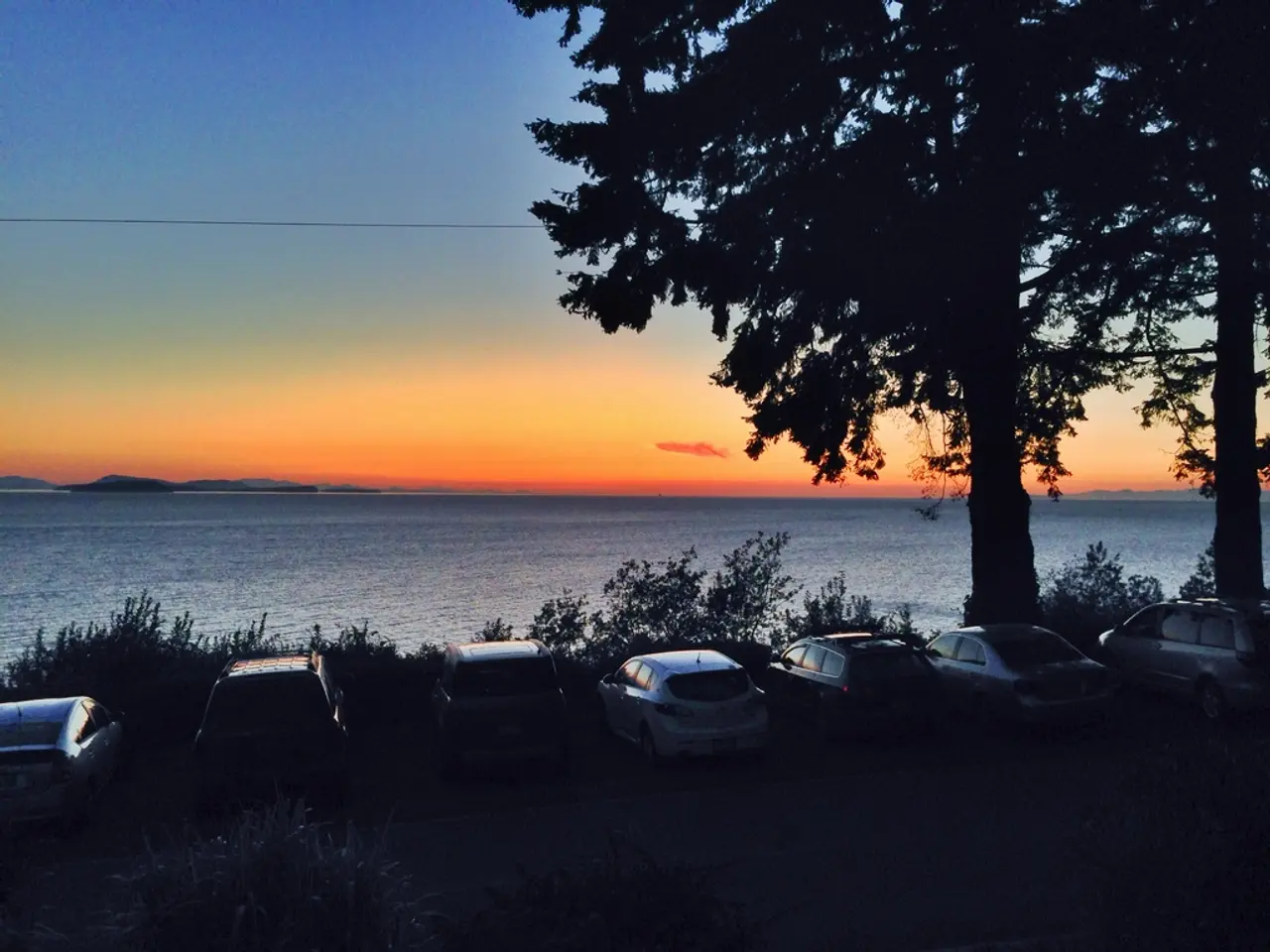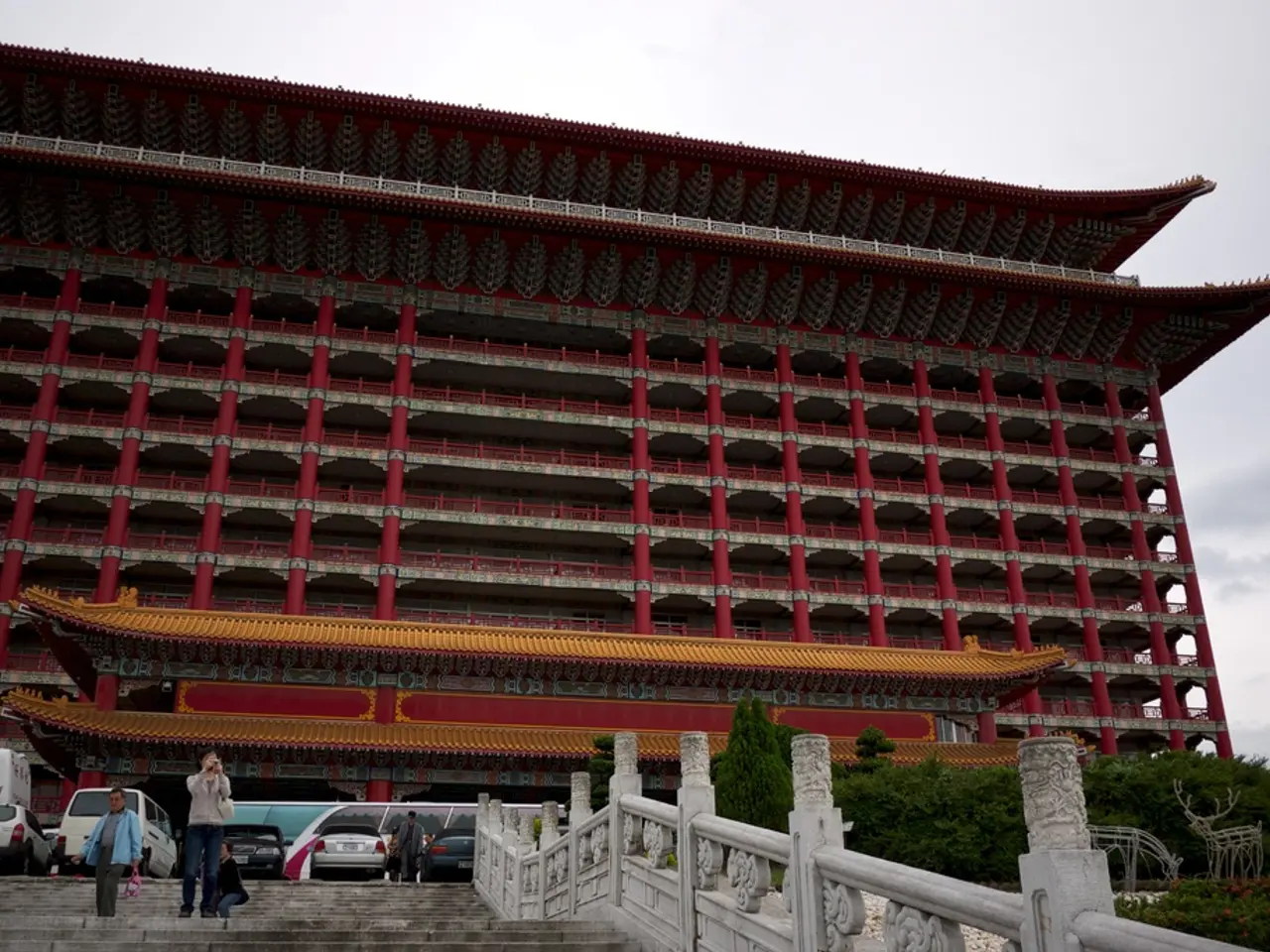Intense Heatwave Overwhelms Mediterranean: Barcelona Experiences Unprecedented Heat Level
Barcelona's Strategies to Combat Urban Heat Islands
Barcelona, a city known for its vibrant culture and architectural wonders, is also taking bold steps to address the growing issue of urban heat islands. The city's strategies focus on passive cooling, green infrastructure, and social engagement, as outlined in the "Shade Plan" and related urban measures.
A key initiative is the Superblocks (Superilles) program, which aims to transform certain neighborhoods into pedestrian-friendly spaces. By restricting car traffic, roads are transformed into parks, shaded plazas, and areas with permeable surfaces. These changes reduce heat absorption from asphalt and promote active cooling.
The Shade Plan also emphasizes increasing urban tree canopy to reach 30% coverage by 2037, focusing on vulnerable neighborhoods. However, in densely built-up cities like Barcelona, planting trees may not always be possible. To address this, mobile structures for artificial shade are being deployed, allowing quick intervention where it is most needed, particularly in areas with high sunlight and a presence of vulnerable people like children or elderly citizens.
Barcelona's approach also includes using light-colored paving materials, which reflect sunlight rather than absorbing it, thus reducing surface heat. Additionally, water features and misting systems are incorporated in public spaces to promote evaporative cooling, which lowers ambient temperatures and improves air quality.
These measures are part of a holistic urban adaptation strategy, blending green infrastructure, water management, and social engagement. The focus on shade, water management, and reduction of traffic-related heat and pollution reflects best practices to mitigate urban heat islands by reducing heat storage and increasing cooling.
Barcelona's strategies serve as an exemplar for densely built-up cities worldwide, demonstrating how urban form reimagining can enhance livability, reduce emissions, and adapt cities to more extreme heat scenarios. However, the much-praised Superblocks project, which aimed to transform the city into a network of traffic-calmed quarters, has been halted due to successful lawsuits by the retail sector.
Despite the challenges, Barcelona continues to test various modules at strategic locations and send them into practical testing as an immediate measure against heatwaves. The city's commitment to climate adaptation is evident in its ongoing efforts to provide special accommodations for those in need during extreme heat, and in its plans to ensure every resident can find climate refuge within five minutes' walk by 2035.
References:
- ACCIÓ - Generalitat de Catalunya. (2020). Barcelona, una ciutat resilient al canvi climàtic. Retrieved from https://www.accio.cat/ca/noticia/barcelona-una-ciutat-resilient-al-canvi-climatic
- IS Global. (2021). Superilles: Strengthening urban resilience in Barcelona. Retrieved from https://www.isglobal.org/en/news/superilles-strengthening-urban-resilience-in-barcelona
- European Commission. (2021). Urban adaptation to climate change: Cities leading the way. Retrieved from https://ec.europa.eu/environment/climate/adaptation/urban/index_en.htm
- The Guardian. (2021). Barcelona's Superblocks: the urban experiment that could transform cities. Retrieved from https://www.theguardian.com/cities/2021/jan/26/barcelonas-superblocks-the-urban-experiment-that-could-transform-cities
Science plays a crucial role in Barcelona's urban heat island mitigation strategies, with environmental science guiding the city's efforts in reducing heat absorption and promoting active cooling employing methods like green infrastructure and water management. Climate-change implications are considered in Barcelona's planning for heatwaves, with the city's commitment extending to ensuring climate refuge for every resident within a five-minute walk by 2035. Weather patterns and their impact on urban heat islands are monitored and adjusted as needed, utilizing weather data to optimize cooling measures and ensure the city's resilience.








